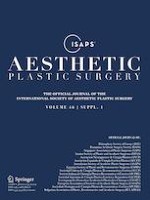28.09.2021 | Response to Letter to the Editor
Invited Response on: “Letter to the Editor: Proper Skin Management in Breast Augmentation with a Periareolar Incision Prevents Implant Contamination and Biofilm-Related Capsular Contracture”
Erschienen in: Aesthetic Plastic Surgery | Sonderheft 1/2022
Einloggen, um Zugang zu erhalten










